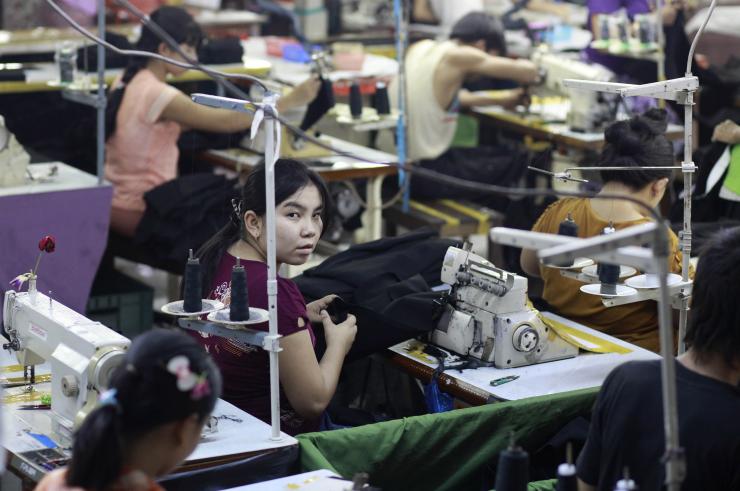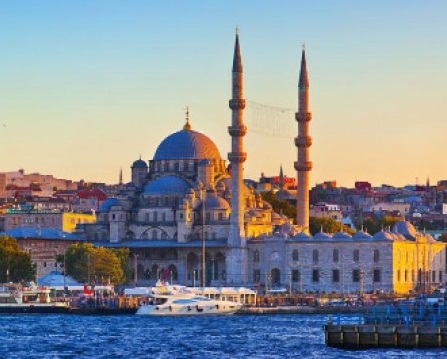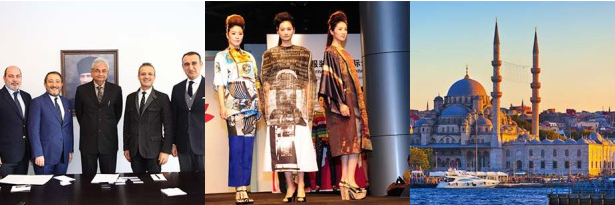FW
Cotton ginners in Haryana have sought a reduction in market fee and a full tax refund, arguing they will not be able to get raw cotton for ginning. Ginners say the state government has not reduced market fee on cotton this season. The four per cent levy will render them uncompetitive and hit business. They want rationalisation of VAT on cotton by ensuring refund of full tax on inter-state sale of cotton.
The Haryana government has issued a notification whereby ginners will not be able to claim about two per cent tax out of the 4.20 per cent value added tax paid on cotton while selling it to other states. Ginners say this will prove disadvantageous for them. They claim that out of the cotton output of 20 lakh bales, only three to four lakh bales are consumed within Haryana while the rest are sold to other states.
Haryana’s new industrial policy has a provision giving 100 per cent exemption from market fee to a new ginning unit. Existing ginning units say this is unfair. Ginners have also demanded they should not be charged fixed rates for power consumption for the whole year. They say the cotton ginning sector is operational for only six to seven months in a year.

Myanmar has positioned itself as a direct competitor to Bangladesh in the RMG industry by setting its minimum wage at $67 per month. The Southeast Asian country though, will have to hike wages at regular intervals, promote collective bargaining, and safeguard workers’ health and rights of workers to avoid falling into the same trap as the Bangladeshi garment industry.
Minimum wage review a positive move

The K3600 per day minimum wage came into effect on September 1, after a lot of debating between employers’ and workers’ associations mediated by the National Minimum Wage Committee for more than two years, since the Minimum Wage Law was passed. A person working at the lowest of the seven grades of workers in a ready-made garment factory makes the same amount in Bangladesh. Myanmar will aim to capture some of Bangladesh’s garment export market, with a high concentration of workers in the low-skills category.
The recent announcement though, did not include any reference to pay grades that give even Bangladeshi workers a promise of some upward mobility, although limited. Moreover, after the November 8 elections, whichever government comes to power needs to implement social protections such as health insurance and pensions that give workers in low-end manufacturing jobs a safety net. Factory owners are already stepping up production targets, with a mandated minimum wage. Thus, additional benefits will have to be given by Myanmar to the young to make them stay motivated on local factory floors as opposed to migrating abroad.
Besides, Myanmar will be seen in a favourable light by global brands interested in responsible sourcing if the government takes some responsibility for their workers’ welfare.
Impact on Myanmar’s economy
The government can raise living standards of workers with the implementation of minimum wage. Inflation rates in Myanmar over the years have been lower than Bangladesh, though. Also, people have a higher purchasing powers because of $67 monthly minimum wage compared to Bangladesh. Myanmar can slowly increase productivity, while maintaining the new wage floor and raising it over time to increase private consumption and drive growth.
Apart from this, the country should work with buyers to help find supply chain innovations that would help higher wages over time without sacrificing competitive advantage. As President U Thein Sein’s economic adviser U Zaw Oo mentioned at a panel discussion, for the country, better productivity is already a priority. Thus, for workers, suppliers and buyers, it is a win-win situation if better wages bring up productivity levels.
By taking a share of the Asian manufacturing pie, Myanmar has the opportunity to develop its human resources, as a country transitioning toward democracy. Migrants may enter the nation, to return to their country of origin. Many of them are currently toiling in poor working conditions in Thailand, Malaysia and Singapore. This seems to be an opportunity that Bangladesh missed, which Myanmar should grab to improve its economy and workers’ lives.
Over 300 overseas buyers from 56 countries are expected to visit the international textile and apparel fair, 'Vatra', to be held from September 28 to 30, 2015 in Jaipur. The fourth edition of the exhibition will be held at Jaipur Exhibition & Convention Centre (JECC). Over 50 Indian buying houses from Delhi, Maharashtra, Jharkhand, West Bengal, Tamil Nadu, Karnataka, Uttar Pradesh and Rajasthan are expected to be a part of the fair. A unique feature of this fair is B2B pre-fixed buyer seller meetings.
The fair is being organised by Rajasthan State Industrial Development and Investment Corporation (RIICO) in collaboration with FICCI and Union Ministry of Textiles. Veenu Gupta, Managing Director of RIICO explains, the fair provides an apt platform for display of latest offerings in textiles, assists participants and exhibitors to form new business relations, exports, partnerships worldwide and locations for setting up businesses in India, among others.
Overseas buyers are mainly expected to visit from countries like Algeria, Australia, Hong Kong, Italy , Japan and the UK. Business worth $85 million was generated during 'Vastra-2014' held in Jaipur last year.
www.vastratex.com

Focus on future of industry

The first day of conference on October 14 has top speakers line up viz. Christoph Auhagen, CBO of Hugo Boss, Gordon Richardson, Creative Director of Topman, Jan Hilger, COO of Ahlers (Pierre Cardin, Baldessarini), Leyla Ertur, Country Manager Production, Europe Region, H&M and Murat Akkun, CSR Country Manager of Inditex.
On October 15, there will be a matchmaking program connecting delegates to the Turkish garment industry and specialised workshops. During the IAF General Assembly, a unique discussion session will focus on the future of the industry. This session will be led by World Bank’s lead specialist Emiliano Duch, who was also a keynote speaker at last year’s convention held in Medellín, Colombia.
Industry Association Executives and Board Members from major associations of the five continents will be part of the panel discussion. World Bank is collaborating with the IAF on forming a clearer picture of what are the most successful strategies and policies to create a stronger fashion industry globally.
Conference to touch on global trade dynamics
The conference on October 14, has been subdivided into seven sessions, including introduction by the Turkish Minister of trade, the key note speech of Hugo Boss’s Auhagen, sessions about supply chain and sourcing developments, CSR and sustainability, TTIP and trade policy and emerging brands and emerging markets. In the sustainability session, IAF will share excellent examples from the denim industry and the supply chain session will feature results from McKinsey’s by now famous CPO study on expectations of future sourcing trends.
Woven into the conference is the convention’s theme: ‘Making it Better’. For the industry as a whole to really improve, new value must be added and old values must be implemented. The supply chain session is built around the slogan: ‘not moving production, but improving production.’ In the sustainability session, the panelists will debate the question - how the total textile and fashion industrial chain can become a better employer with less negative impact on our environment. The ‘emerging brands and emerging markets’ session will show how local Turkish brands have developed into big retail chains. There would also be a session on new entrepreneurs as well as the role of wearable technology. Iafnet.eu
A world leader in production of colour and additive solutions for polymeric products, Americhem Inc, released its 2016–2017 Color Trends comprising of six colour palettes: Rush Hour, Office Diligence, Casual Friday, Night Life, Welcome Distraction and Sunday Brunch.
An announcement of the colour families was made on September 10, 2015 at Americhem’s annual colour trends course, as part of Americhem U, which is an ongoing educational series for professionals in the synthetic fibres and plastics industries. Developed by a committee of colour trend specialists, the colour families are predicted to be popular in the coming years based on global influences, pop culture, design trends, technology and fashion-forward colour predictions.
The groups of colours, besides the textures, finishes and effects, are translated into seasonal design concepts, moods and lifestyles, each with a unique story to convey the emotions and context of the colours. This is done in conjunction with a fashion design house in Milan, Italy.
The colour families this year revolve around a common theme, a week in our everyday lives. Aubrey Barto, lead colour trends specialist for Americhem, said that these colours would be at the forefront of product design and, therefore, at the leading edge of consumer preferences in the future. The colours are also apt for any industry interested in accenting their products with innovative and modern colours, she added.
South Asia Textile Industries Lanka, a leading Sri Lankan textile manufacturer recently started an ambitious expansion programme. It has begun investing, what is pegged to be over Rs1 billion, in the latest 5th Generation Hybrid/Nano technology used in state-of-the-art textile machinery in all its divisions.
New and innovative knitted fabrics can be developed and produced by these upgrades, which comprise of high-speed knitting machines from SANTONI Italy and UNITEX Singapore. The company stated that besides this, high-end fully computerised printing machines imported from STORK, in Austria and Hollandis are new equipments to be installed.
Prithiv Dorai, Chief Executive Officer, says large scale expansion would allow South Asia Textiles Industries Lanka to reach a completely new dimension in textile manufacturing in Sri Lanka. It facilitates an extensive benefit to local apparel manufacturers in terms of speed and flexibility, as well as, it would result in greater availability of the latest fabric styles and colours, in keeping with international trends. The company is a subsidiary of Lanka Century Investments PLC and Ceylon Leather Products PLC.
India's cotton exports dipped 21 per cent for the ninth month straight in August at $26.80 billion ($21.26 billion). In August, the number dropped to $863 million (Rs 5,696 crores), which is seven per cent against, $932 million Rs 6,151 crores) in the same period in 2014.
In this financial year, exports in the last five months were down by two percent at $4.24 billion (Rs 27,984 crores) against $4.34 billion (Rs 28,644 crores) in the same period in 2014. For this fiscal, the government has set an export target of $13.67 billion. A sharp decline of the rupee against dollar has hit textile exports from the country.
R K Dalmia, Chairman of the Cotton Textiles Export Promotion Council, called for immediate government intervention and said that the trend is a matter of deep concern and the industry, despite being competitive in the market, is compelled to bear the brunt.
Besides, Pakistan, Bangladesh, South Korea, Turkey, Vietnam, and Cambodia, which are competing are given preferential access in major countries that import, including the European Union. Indian textiles in important markets such as China and Canada are faced with discriminatory import, which affects the prospects of India, Dalmia added.
To reduce these discriminatory duties, Texprocil urged the government to initiate dialogue with China, Canada and Turkey. Dalmia also said that the free trade agreement with the EU, Australia and Canada should be fast-tracked by the government to eliminate trade barriers and gain market access to these leading countries. Moreover, he feels that the industry demand to include cotton textiles under the three per cent interest rate subvention scheme and release funds under the Technology Upgradation Fund scheme should be considered by the government.
At a time when wellbeing, comfort, functionality and performance are at the heart of shoppers' concerns, the textile industry prides itself in its capacity to offer more and more innovative solutions to fulfil those requirements. In partnership with the Fédération de la Maille et de la Lingerie, Interfiliere Shanghai will be highlighting technical and innovative textiles and accessories for high performance underwear in the sports and wellbeing area.
The Mouv'Innovation Forum dedicated to innovation will provide a comprehensive overview of the latest technical and technological progress made by Interfiliere's exhibitors. A varied selection of samples supplied by exhibitors will demonstrate the latest innovations in fabrics, accessories and finished products.
After celebrating its 10th anniversary last year, Interfilière Shanghai will be back on October 12 and13, 2015 at the Shanghai Exhibition Centre with a complete offer of intimates and swimwear. The expertise of Eurovet gathered since its inception over 50 years ago has positioned its shows globally as the must-attend events, and the 11th Interfilière Shanghai will once again play its leading role to bring high quality business inspiration for professionals worldwide.
www.interfiliere.com
Sizing units are on strike in Pakistan. This has affected the entire textile chain and in particular the operations of bleaching, dying and printing units. The downward industry including power looms has started closing as there is no arrangement to process the grey cloth. The printing, dying and bleaching industry is not getting sufficient cloth to feed their units.
Sizing owners have been on strike against sales tax laws. They say the 17 per cent sales tax on starch used by them has eroded their profitability. It’s feared this protest will affect exports and deprive Pakistan of much needed foreign exchange.
Sizing is a process that adds strength and smoothing coating to the thread before it is woven into fabric. Desizing is done to remove the sizes that have been attached to the yarns during the weaving process. Different methods for desizing are enzymatic desizing, oxidative desizing, acid steeping, rot steeping desizing with hot caustic soda treatment and hot washing with detergent.
There are two types of sizing agents. There are natural sizing agents like starch and its derivatives, cellulose and its derivatives and protein based sizing agents. And there are synthetic sizing agents like poly acrylates, modified polyesters, polyvinyl alcohol-based styrol acid co-polymers.
Bangladesh wants to set up a readymade garment warehouse in Russia in a bid to increase trade with the Commonwealth of Independent States countries. The presence of such a warehouse will boost exports. Bangladesh has so far concentrated only on EU and American markets but now wants to explore new markets with diversified products.
The World Cup Football is going to be held in Russia in 2018. Bangladesh feels this is a great opportunity as knit garments would be in high demand during the world’s number one sports event. Bangladesh exported goods worth $796 million to CIS countries in 2014 and $721 million in 2013.
The Russian clothing and footwear market has been witnessing negative growth since 2014, forcing many European brands to close their stores and exit the market. This, along with China losing its position as the world’s leading garment manufacturer, has opened Russia for exports from Bangladesh and other Asian countries.
Apart from Russia, Bangladesh wants to have a garment warehouse in India, as well, especially, in Gujarat. The country is also in discussions with Sri Lanka and Turkey for free trade agreements, but some issues still remained unresolved.












